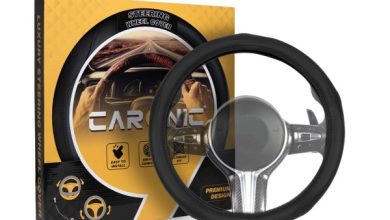Kayak Repair Fixing Common Issues on the Go

Picture yourself gliding across the calm waters of a lake, surrounded by nature’s beauty, when suddenly, disaster strikes your kayak starts taking on water. Don’t panic! In this comprehensive guide, we’ll equip you with the knowledge and skills to tackle common kayak issues while you’re out on the water. From identifying the problem to executing quick fixes and implementing preventative maintenance, you’ll be prepared to handle any mishap that comes your way.
Understanding Common Kayak Issues
Identifying the Problem
Before you can address any kayak issue, you need to know what you’re dealing with. Leaks, cracks, punctures, and damage to accessories are among the most common problems paddlers encounter. Keep a keen eye out for signs of wear and tear, especially in high-stress areas like the hull and cockpit.
Causes of Kayak Damage
Understanding the root causes of kayak damage can help you prevent future issues. Environmental factors such as rocks, branches, and rough terrain can pose threats to your kayak’s integrity. Mishandling during transport or launching, as well as prolonged exposure to UV rays, can also contribute to wear and tear.
Preparing for Repairs
Being prepared is half the battle when it comes to kayak repair. Make sure you have a basic repair kit on hand whenever you hit the water. Essential items include duct tape, marine sealant, a multi-tool, spare hardware, and a patch kit specific to your kayak’s material (fiberglass, plastic, etc.).
Quick Fixes for Common Kayak Problems
Patching Leaks and Cracks
When it comes to leaks and cracks, time is of the essence. Start by drying the affected area thoroughly, then apply a generous amount of marine sealant over the damaged area. For larger cracks, consider using a patch kit designed for your kayak’s material. Follow the manufacturer’s instructions carefully for best results.
Sealing Punctures
Small punctures can be sealed temporarily using duct tape or a similar waterproof adhesive. Simply cover the hole with the tape, pressing firmly to ensure a tight seal. Keep in mind that this is only a temporary solution and should be addressed more permanently when you’re back on dry land.
Fixing Damaged Accessories
If your kayak’s accessories, such as seats, paddles, or rudders, become damaged while you’re out on the water, improvisation is key. For example, a broken paddle blade can be reinforced with duct tape or even a spare piece of wood until you can make more permanent repairs.
Advanced Repairs for Kayaks
Dealing with Major Damage
In the unfortunate event of major damage to your kayak, such as extensive cracks or structural issues, it may be necessary to make more involved repairs. Start by assessing the extent of the damage and determining whether it’s safe to continue paddling. If the damage is severe, it’s best to err on the side of caution and seek professional assistance.
Reinforcement and Strengthening
To prevent future damage, consider reinforcing weak areas of your kayak. This can be done using additional layers of fiberglass or plastic, or by installing reinforcement patches in high-stress areas. Proper reinforcement can significantly increase your kayak’s durability and longevity.
Fiberglass and Plastic Repair
Repairing fiberglass and plastic kayaks requires specific techniques and materials. For fiberglass repairs, you’ll need fiberglass cloth, resin, and a sanding tool. Start by cleaning and roughening the damaged area, then apply the resin and fiberglass cloth in layers, allowing each layer to dry before adding the next. For plastic kayaks, a heat gun or plastic welding kit may be necessary to melt and fuse the damaged area back together.
Maintenance Tips to Prevent Future Damage
Proper Storage and Transport
Properly storing and transporting your kayak can significantly extend its lifespan. When not in use, store your kayak in a cool, dry place away from direct sunlight and extreme temperatures. If storing outdoors, use a kayak cover to protect it from the elements. When transporting your kayak, use padded racks or straps to secure it to your vehicle, and avoid dragging it on rough surfaces.
Regular Inspections
Routine inspections are crucial for catching potential issues before they escalate into major problems. Before each outing, inspect your kayak for signs of damage, including cracks, dents, and loose fittings. Pay particular attention to areas that are prone to wear and tear, such as the hull, seams, and hatches.
Cleaning and Care
Proper cleaning and maintenance can help keep your kayak in top condition. After each use, rinse your kayak with fresh water to remove salt, sand, and debris. Use a mild detergent and soft brush to clean the hull and cockpit, taking care not to scratch the surface. Regularly lubricate moving parts such as hinges and rudder mechanisms to prevent corrosion and ensure smooth operation.
Safety Considerations
Assessing Risks
When faced with kayak damage while out on the water, it’s essential to assess the risks carefully. Consider factors such as the severity of the damage, your proximity to shore, and the current weather conditions. If the damage compromises the integrity of your kayak or poses a safety risk, it’s best to return to shore and seek assistance.
Knowing When to Call for Help
While minor repairs can often be handled on the go, there are times when professional assistance may be necessary. If you’re unsure about the extent of the damage or lack the necessary tools and expertise to make repairs, don’t hesitate to call for help. Many kayaking clubs and outfitters offer repair services or can provide guidance in emergency situations.
Conclusion
Mastering kayak repair on the go is an essential skill for any paddler. By understanding common kayak issues, learning basic repair techniques, and practicing preventative maintenance, you can enjoy your time on the water with confidence. Remember to stay safe, stay prepared, and always respect the power of nature.




